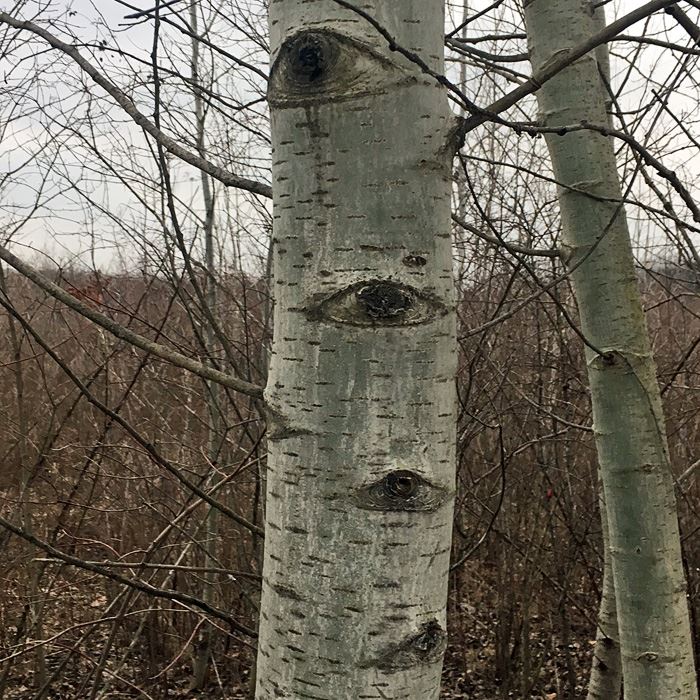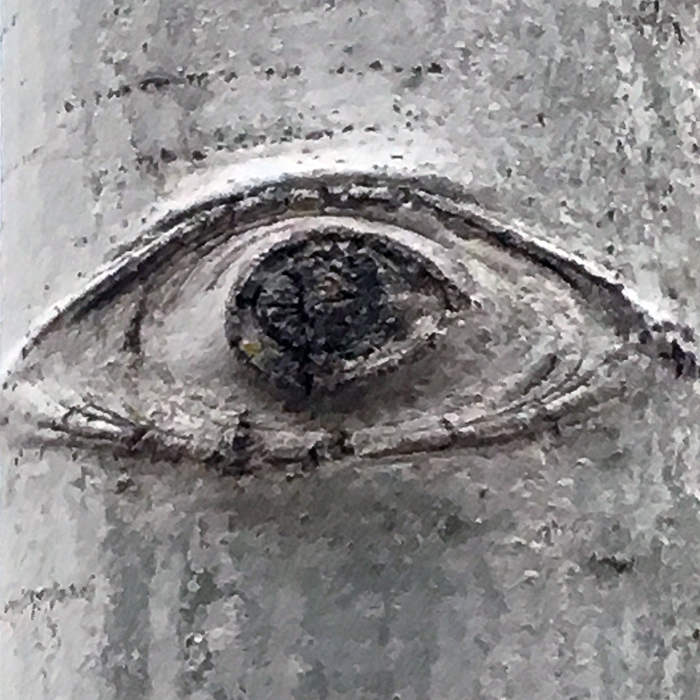Tree Peepers

By Karen Menard
The trees have “eyes.”
Lining the trail, stoic watchers rigidly stand tall. If they could speak, they’d tell stories about being “eye”witnesses to fluffy-tailed ghost dogs that roam the trails at sunrise, stalking rabbits. As spectators to the chickadee family living inside a belly button of a nearby cavity, they’ve peeped rare views of a fledgling’s first flight. And, as towering onlookers to the forest floor below, they silently stood watch last fall, as feeding flocks of grackles and rusty blackbirds nonchalantly flipped their cast leaves aside, tickling the tops of their roots.
Yes, these trees have eyes, but unlike humans, these special “eyes” are found on their trunks! In this case, the trees are Cottonwoods, growing along a Metropark trail. Cottonwoods prefer to grow in wetter, sunny environments; however, when they end up crowded or within a shaded, drier situation, they can become stressed, leading to bigger, defined markings or trunk scars that remind us of “eyes” and occur as part of a biological process, called cladoptosis.
This process actually refers to the shedding of branches as the tree essentially prunes itself. If sunlight is lacking in the smaller, lower branches, or water is scarce during a drought year, nutrient movement is decreased to this particular location. These less robust twigs are then, shed, enabling the tree an easier chance of survival through better support of more vigorous parts of the plant over time.
So, the eyes do have it. These “eyes” represent just one of many unique plant adaptations that occur in nature and also provide us some interesting views of the forest. As you walk the trails, take a moment to study the tree trunks. As you stare into the woods, you just might find that there are sets of “eyes” staring right back at you.
--
Photos: Karen Menard (Fallen Timbers Battlefield, 2/24)
